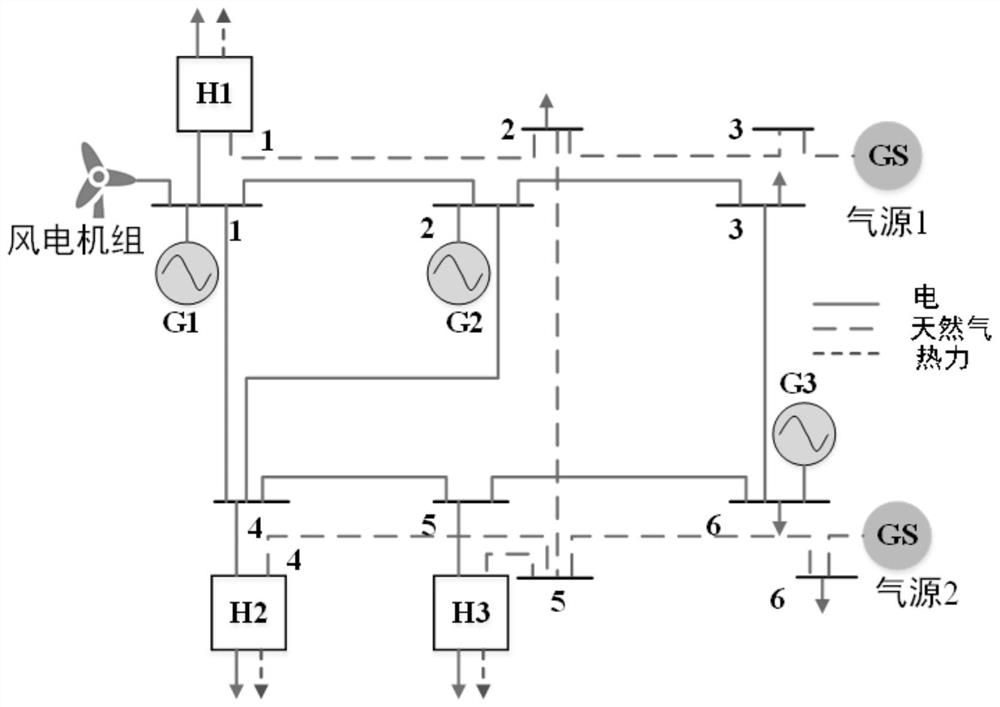A collaborative low-carbon planning method for multi-energy systems based on carbon emission flow
A system planning and multi-energy technology, applied in the direction of system integration technology, information technology support system, data processing application, etc., can solve the problem of inability to distinguish the carbon emission responsibility of multi-energy systems, not fully utilizing the low-carbon emission reduction benefits of multi-energy systems, Less consideration of carbon emission limits and other issues
- Summary
- Abstract
- Description
- Claims
- Application Information
AI Technical Summary
Problems solved by technology
Method used
Image
Examples
Embodiment 1
[0210] The following takes a 6-node system as an example for planning, and the application examples are as follows:
[0211] This example system is a 6-node multi-energy system, and the topology of the cross-regional multi-energy network is as follows image 3 shown. The system includes 4 generating units (one of which is a wind turbine), 2 gas sources and 3 regional multi-energy systems (H1~H3). The upper cross-regional multi-energy system includes a wind turbine with a capacity of 50MW to be built, 8 power transmission lines to be built and 19 natural gas pipelines to be built; each regional-level multi-energy system (energy hub) includes an existing Construction of electric boilers, 1 built gas boiler and 3 cogeneration units to be built. Consider the load profiles for two typical days in winter and summer, each with a duration of 6 months.
[0212] The overall carbon emission limit is set to be 710000tCO2, and the planning results of the multi-energy system obtained by ...
PUM
 Login to View More
Login to View More Abstract
Description
Claims
Application Information
 Login to View More
Login to View More - R&D
- Intellectual Property
- Life Sciences
- Materials
- Tech Scout
- Unparalleled Data Quality
- Higher Quality Content
- 60% Fewer Hallucinations
Browse by: Latest US Patents, China's latest patents, Technical Efficacy Thesaurus, Application Domain, Technology Topic, Popular Technical Reports.
© 2025 PatSnap. All rights reserved.Legal|Privacy policy|Modern Slavery Act Transparency Statement|Sitemap|About US| Contact US: help@patsnap.com



